Lofant Anisova is one of the most "multifunctional" plants on the plot. Lofant is extremely decorative, its landing exuded a strong pleasant fragrance, and the use of this plant in folk medicine and cosmetology is simply not reading. Even a novice gardener will cope with the cultivation of the Lofanta anise. The plant is absolutely unpretentious to the soil, to the care. In this article, we will deal in how you can use Lofant anise in medicinal purposes, how to grow and harvest this plant.
Plant Lofant Anisova - Description
- Lofant Anisian can be considered a close relative of mint and Melissa. The plant was brought by breeders. In the literature you can meet such names of the licont of anise, as a multicolarship Fennelhiel, Issop Anise, Lofant Fennelhiel, North Ginseng, Mexican Mint, etc.
- Lofant Anisovy - a perennial herbaceous plant that belongs to the family of casnotkov.
- Lofant Anisian can be found in the Western regions of the United States, in Canada, in the Far East and Central Asia.
- Lofant anise with favorable growth conditions reaches 100-150 cm in height.
- The root system of the lofant anise rod, urine.
- The young Lofant Anisov has an average of 4-5 ribbed shoots. Over time, the number of shoots increases.
- The leaves in the Lofant Anisoye are located on the stems opposed. They have a lanceal shape, slightly pilt edge and grow on a small pet. Green or brown Lofant leaves can reach 10 cm long and up to 5 cm wide.
- Flowers at the lofant anise is very small, painted in a blue-lilac color. They are going to spectacular oblong inflorescences on side or central shoots. The infantry length of the anise lofant can vary from 2.5 to 14 cm. The characteristic feature of the Lofant is its strong fragrance, attracting a large number of insects.
- On one plant can be located up to 10 spectacular inflorescences - "candles".
- The flowering period at the Lofant Anisian begins in June and lasts until the end of the summer season.
- Anise Lofant fruit is a smooth brown nut, filled with a large number of small seeds.
If you decide to put on your site, then be prepared for the fact that you will "settle" the bees and other insects from all over the county. Just imagine that with the 1 hectare of the Anisian Lofanta, you can collect as much honey as the hectare of linden or acacia. This perennial can grow at the same place up to 6 years without loss of his decorative qualities.
Lofant Anisov and Tibetan - what their differences
And Anisian Lofant, and Tibetan Lofant are incredibly in demand among summer residents. What are the significant differences between these two varieties of multicrees? Consider the main ones:
- the aroma of the lofant anise is much stronger than the fragrance of Lofant Tibetan;
- the inflorescence of the Lofanta anise is painted in a blue-lilac color, and Tibetan Lofanta - white;
- lofant Anisian is a little inferior to the Lofant Tibetsky to the degree of frost resistance;
- lofant Tibetan is more popular in folk medicine, and Lofant Anisova - in cooking, cosmetology.
But in fact, similarities in these varieties of Lofant are much more than differences. It is quite possible to grow together on the household plot.
Lofant Anisova - Photo
Lofanta anise variety
Breeders do not leave attempts to bring the new grade of the Lofant, which will have improved characteristics. If you sniff the infloretia of the Lofant of different varieties, you can be surprised by a variety of flavors. Some varieties smell more Anis, while others are mint or apple. Seeds of various varieties of the Lofanta Anisovo can be used in any horticultural store. The greatest love in the gardeners deserved the following varieties of anise multicrees:
- "Snowball";
- "Memory of Capeleva";
- "SOCHAR";
- "Premier";
- "Dandy";
- "Summer resident";
- "Astrakhan 100";
- "Honey Bee Blue" and others.
Lofant anise - scope
Lofant Anisian can grow on your site not just as a beautiful flower. For example, if there is a lot of snake in your area, the multicrees can help in their "exile" from the site. It is enough just to divorce the fire with this grass, and her strong fragrance when burning will scare the snakes.
- In cooking. Lofant Anisian is an incredibly fragrant spice that hostesses are often used in fresh or dried. The leaves of a multicrees give a pleasant lemon, mint, anise flavor with vegetable and fruit salads, as well as meat or fish dishes. Lofant is also used when preserving jam, compotes, jams, etc.
- In beekeeping. Lofant Anisian is a famous honey, the huge advantage of which is that the plant can produce nectar under any weather conditions.
- In cosmetology. The valuable composition and the unsurpassed fragrance make the Lofant Anise-welcome component in creams, tonic, masks and hair shampoos. Lofant essential oil is used to create perfumes.
- In agriculture. Lofant Anisian can be grown on the plot not only as a decorative plant, but also as a feed plant.
Lofant Anise - Benefit and Harm
Lofant anise - chemical composition
In order to understand the value of any plant, it is necessary to explore its chemical composition. Lofant Anisian is actively used not only in folk medicine, but also in cosmetology, cooking, perfumery. In various parts of this plant, the following valuable elements are contained:
- methylhavikov (Lofant almost 80% consists of this substance, which and "gives" such a strong flavor to the plant);
- essential oil;
- lemon acid;
- apple acid;
- coffee Acid;
- vitamin C;
- glyosides;
- flavonoids;
- tannins;
- group vitamins in;
- copper;
- zinc;
- iron;
- chromium;
- selenium.
The concentration and ratio of these useful elements in the lofant anise depends on the grade of the plant, its age, the place of growth, the conditions of growth, etc.
Lofant Anise - Medical Properties
The indigenous Indians in North America knew about therapeutic properties of the Loffant Anise, where this plant was found quite often. Local characteristics used this long-term grass for the treatment of various ailments - cough, disorders of the gastrointestinal tract, purulent wounds and other skin damage. Currently, it is proved that, with proper appointment and use, Lofant Anisova has the impact of the following species:
- antibacterial impact;
- antiviral impact;
- antifungal impact;
- immunostimulating impact;
- antioxidant effect;
- anesthetic effect.
It is worth noting that Lofant Anisian does not apply in traditional medicine. The plant is used to treat any ailments only in traditional medicine. Before applying Loffan anise for treatment, consultation with the doctor is required. Anise multicrees can be useful in the following situations:
- in the treatment of diseases of the respiratory system. In traditional medicine, there is a lot of recipes with the Lofant Anisov for the treatment of dry, wet cough, shortness of breath;
- in the treatment of gastrointestinal disorders. Grass Lofant Anisova can facilitate the condition of the patient with the stomach peptic disease, the duodenum, can help with gastritis, etc.;
- to normalize the work of the liver and pancreas;
- in the treatment of various disorders in the work of the cardiovascular system. Lofant anise can help patients with atherosclerosis, angina;
- in reducing blood pressure;
- in the treatment of various fungal lesions of the skin;
- in reducing the manifestations of an allergic nature on the skin of adults and children;
- to normalize the work of the sebaceous glands on the skin, for the treatment of seborrhea;
- to raise and activate the vitality of man. Various infusions, decoction and teas based on anise lofant useful to use people who have suffered a heavy operation that are restored after a long disease. The effect of the anise multicrees can be invaluable for weak children, for the elderly.
You will be able to feel the healing effect of the Lofant Anise, even after a short stay near this plant. Gardeners are not in vain trying to land the Lofanta at the benches or arbors. A session of such "aromatherapy" instantly give the vitality, raise the mood.
Lofant Anise - Contraindications
As with any other medicinal plant, in addition to the useful properties of the Lofant Anise, there are a number of contraindications. Avoid the use of multicrees or use it with caution follows the following categories of people:
- people with the individual intolerance to the Lofanta anise;
- people prone to allergic reactions to various medicinal herbs;
- low arterial pressure people;
- pregnant and lactating women;
- children.
If you still decided to use Lofant Anise to treat any disorder, then you will definitely consult your doctor. It is also always worth abide by the dosage of all substances in any recipes of traditional medicine.
Lofant anise - landing
Choose time for landing anise lofant
Lofant Anisian can be seen both in spring and autumn. Choose this or that landing time follows depending on the method of planting.
- Spring landing. You can plant the Lofant Anisian at the end of March if you chose a seaside cultivation method. If a fit was chosen immediately into the open soil, then it will suit the time interval from April to March.
- Autumn landing. Some gardeners prefer to plant Lofant Anisian at the end of October right into the open ground.
Please note that Lofant Anisian, grown by the confined method, will bloom before Lofanta, who was sown in open ground.
Choose a place to land anise lofant
To choose a place for putting the Lofant Anisov, it is worth considering attention. This perennial will be able to grow in one place under 6 years, if the conditions are comfortable for it.
- Lofant anise is not demanding to the place of growth, but it is better to choose a plot that will be protected from a strong wind.
- Lofant Anisian just needs sunlight. Choose a well-lit plot or a plot with scattered light. Some varieties of Anisian Lofant are successfully growing in the shaded places, but very rare. Note that the lack of lighting with the autumn sowing of the Lofant will definitely affect the quality of flowering next year. Gardeners are recommended to organize additional lighting for this perennial.
- When choosing a place of landing of the Lofanta anise, it is worth considering the location of other decorative cultures. Plant looks effectively in single landings. Of course, it is worthwhile to avoid the immediate vicinity of the Fennel Multicrees with garden crops.
- When choosing a landing site of the Lofant Anise, it is also worth considering which plants grew in this area to it. It is undesirable to plant a multicrees on the site of already existing landings of the Lofant. Every 6-7 years, the place of growth should be changed to allow the soil to resume the reserves of nutrient elements.
We choose the ground for landing anise lofant
Even a novice gardener will cope with the cultivation of the Lofant Anise, as there are no special hassle with the choice of soil for this decorative perennial. Consider some recommendations that will allow you to grow a lush plant up to 150 cm in height:
- avoid landing of the Lofant in a wetland;
- avoid landing anise lofant in too sandy soil;
- optimal primer for anise lofant - suesy and well-drained;
- lofant Anisian will grow not very intensely in too acidic soil. Prefer the soil with a weakly acidic alkaline reaction or neutral.
Even in case of non-compliance with these recommendations, Lofant Anisian is well rooted and will delight you with its fragrant inflorescences, since this perennial is completely unpretentious.
Grow seedlings of the lofant anise
The cultivation of the seedlings of the Lofanta anise provides more than a perennial flowering compared to landing in an open ground. Consider an exemplary instruction on the crop seeds of multicrees at home:
- first you need to purchase a suitable planting material. The seeds of the Lofanta Anisov can be purchased in almost every store for gardeners. Be sure to pay attention to the shelf life of the planting material. Otherwise, waiting for the shootouts of the Lofanta will be in vain;
- seeds of the Lofant Anise must necessarily take a preset training. To begin with, soak the seeds in a weak mortar solution for 30 minutes to disinfect them. Then remove the seeds, place them on a piece of gauze for drying. Right in Marle, place the Lofant Seeds in the refrigerator for 1 day;
- for sowing seeds, you can purchase a ready-made nutrient soil in the store or take an ordinary garden land if it is rather nutritious on your site. Soil be sure to sterilize the ferry;
- prepare the container suitable size for seeding. Place the drain layer on the bottom, fill the container with sterilized soil. On the surface, make a groove in a depth of about 0.5 cm;
- press the seeds, carefully spaw their water temperature, pour into the soil;
- in order to create the most comfortable conditions for the germination of seeds, the container must be covered with film or glass;
- approximately 1 week you will notice the shootings of the anise lofant. Water them between the rows by adding a little boric acid into water;
- after shootouts grow slightly, the shelter can be gradually removed. A month later, the Lofant seedlings have achieved sufficient size to pick them into separate containers;
- anise's adult seedlings are planted in an open ground in late May, when warm weather is installed. Between individual plants, withstand the minimum distance of 25 cm, and between the rows - 50-60 cm.
Lusting Anise Lofant in Outdoor Soil
The landing of the Anisian Loffant seeds immediately into the open ground can be carried out both in spring and under the winter. Consider approximate instructions for sowing seeds:
- if you decide to sow the seeds of the Lofant of anise in the spring in the ground, it is desirable to prepare a landing site in the fall. Carefully dig it, bring the organic, potash salt, superphosphate;
- in the spring, the plot is once again, scolding it and build a furrow, in which you will sow the seeds of the Lofanta anise. Approximate depth of the groove - 2-2.5 cm, and between the rows leave a distance of 50-60 cm;
- spring landing of Anisian Lofanta in open ground is usually taken in March;
- press the seeds in the furrow. Soil must be wet;
- waiting for the shoots of the Lofant Anisian in the open soil will have longer than when growing at home. Seizians you will see about 2-3 weeks. Careful for the young Lofant at first need carefully. Watering the plants as needed, clean the weeds, and by the autumn a multicrees will surely bloom;
- surprise Lofant Anisian in open ground can be in the fall. In this case, the plant will begin to "wake up" in the spring very early, and bloom will not make herself wait.
Lofant Anisian - Care
Lofant Anisian - a grassy perennial plant, which is unpretentious not only to the soil, but also to care. Consider the main "requirements" of multicrees:
- watering. Water Lofant Anisian, like most other ornamental plants in the garden, still have. Do it as needed, as the earthy coma burned around the plant. It is worth noting that the Anisian multicrees is a plant that has a well-carrying dry time. But the regular overflow is more dangerous for perennial, since its root system begins to just rot;
- weeding. To maintain the aesthetic appearance of the landing of the Anisian Lofanta will have to regularly get rid of weed grass, which can also be an additional carrier of pests and diseases;
- swimming. In order for the root system of the plant to receive a sufficient amount of air, periodically loosen the soil around the plant. Do not allow the formation of a crust on the surface of the soil;
- feeding As already mentioned, Lofant Anisian unpretentious to the composition of the soil. But in the case of a slow-down growth rate, scant flowering, you can feed the plant with any complex fertilizer, carry out an extractive feeder;
- removing infloresions. The lighting inflorescences of the Lofant will only spoil his appearance, and therefore they are worth a timely manner. Gardeners who grow Lofant as a medicinal plant also recommend not allowing the ripening of seeds and self-seeding plants. "Improved" plants have less pronounced healing properties.
Zimovka Lofant Anisovoye
In the regions with too severe winters, Lofant is grown as an annual plant. With the end of the growing season, the plants are simply fully removed from the ground and leaving the plot for new landings next year. But in most regions of the middle lane, Lofant Anisian can be perfectly winter, but only under the shelter. With the approach of winter, the stems of the Lofant is almost completely cut off or left "hemp" to 10 cm in height. Plants are covered with a sweetheart or fallen leaves. No additional preparation for the winter period Lofant Anisian no longer requires.
Collection of Lofant Anisovoy
- If you want to assemble fresh leaves of anise lofant for use in vegetable, fruit salads, in sauces to meat or fish dishes, then you can do it throughout the spring summer season. Just cut the required number of leaflets with sharp scissors.
- If you want to use Lofant Anise as a medicament, then to collect raw materials you need to choose the start of flowering time.
It is during this period that the plant accumulates the maximum concentration of nutrients. After a slice of young shoots and leaves, the plant should not "decrease" more than half. The collected raw materials are dried in a cool and well ventilated room or outdoors under a canopy. Further, the leaves and stems of the Lofant can be chopped and stored in glass or ceramic containers.
If you do not know which plant will and decorate your site, and bring additional benefits, then we must look at the Lofant anise. This perennial will create the illusion of landing lavender, envelops the space around him with a pleasant aroma and bright paints will bring in the landscape. Good cultivation!

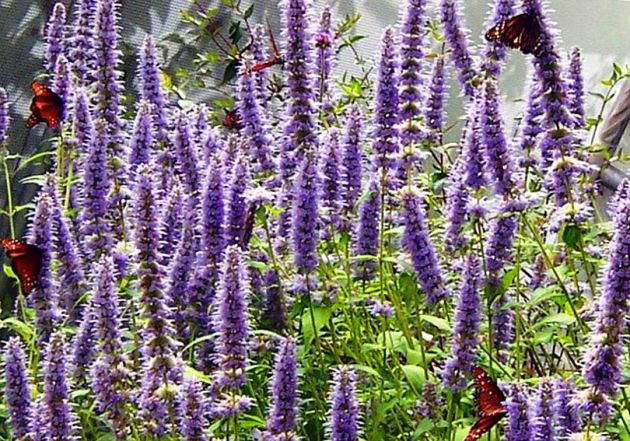
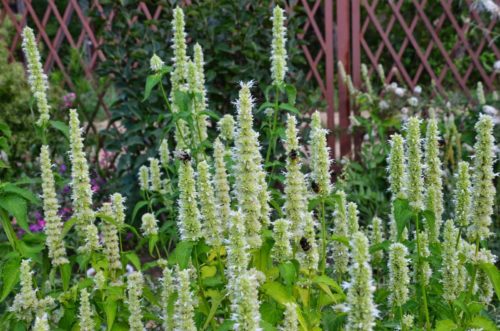


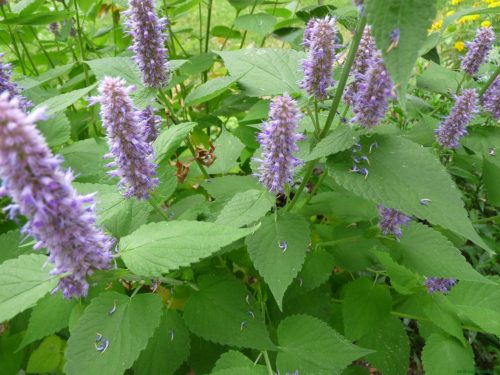
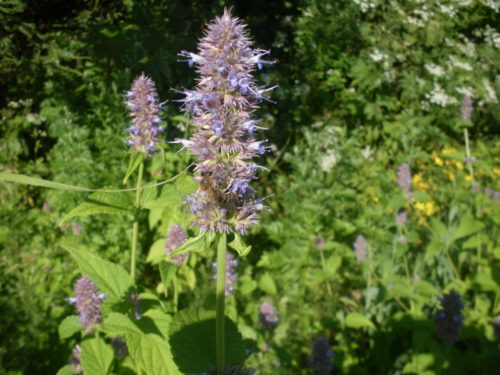




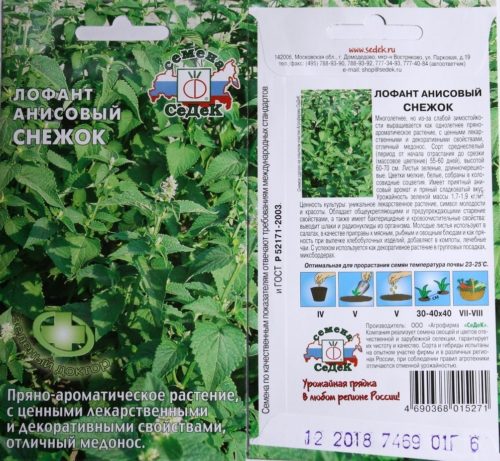
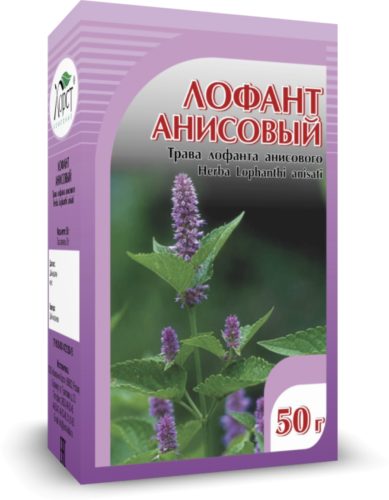
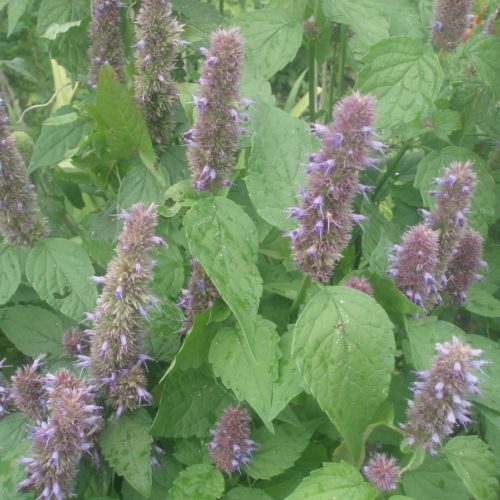
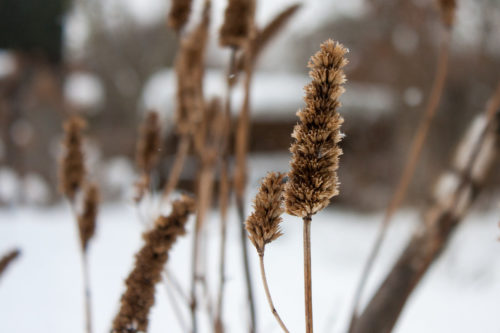
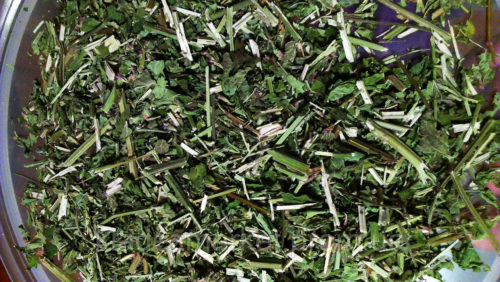












 Start a discussion ...
Start a discussion ...